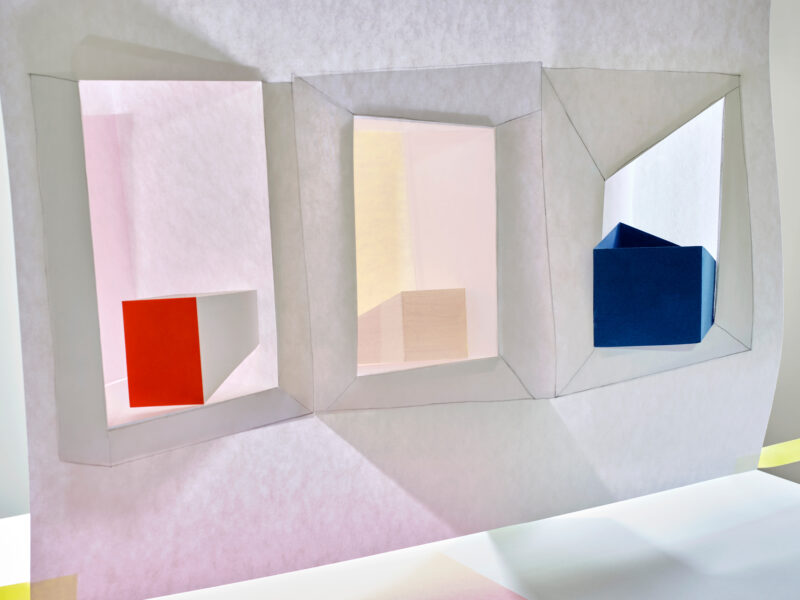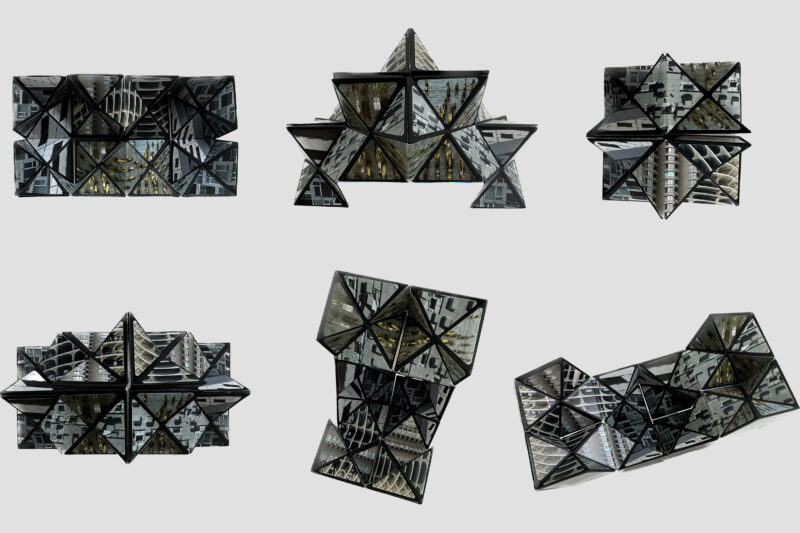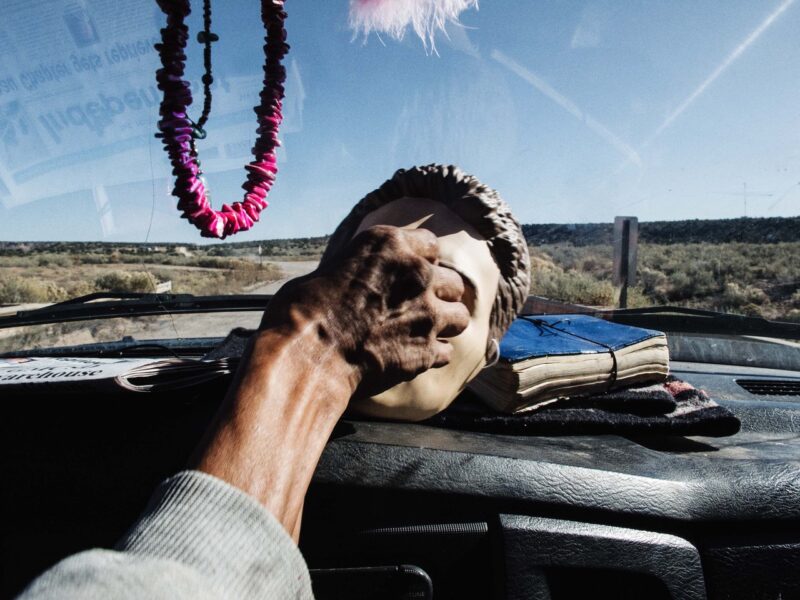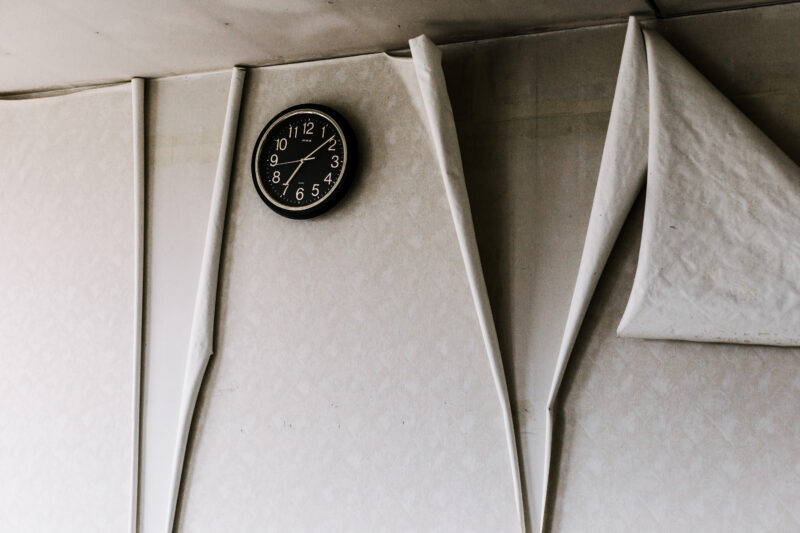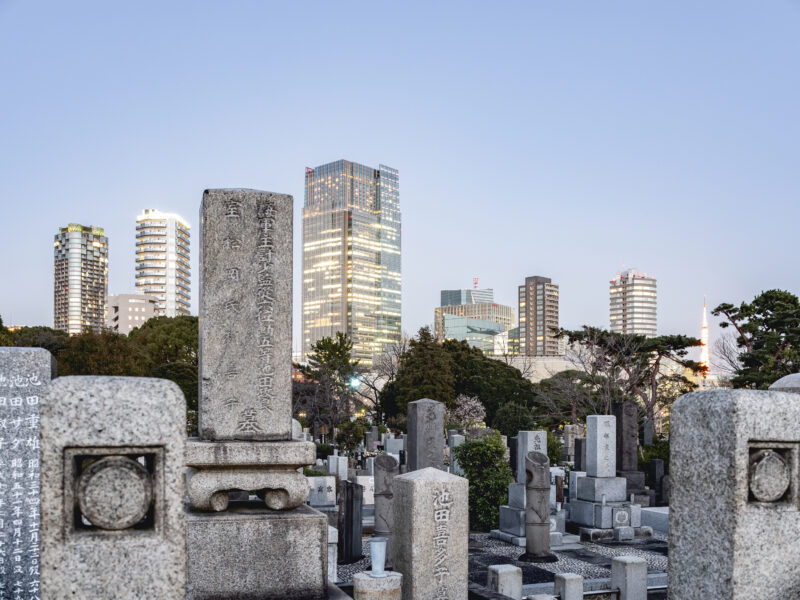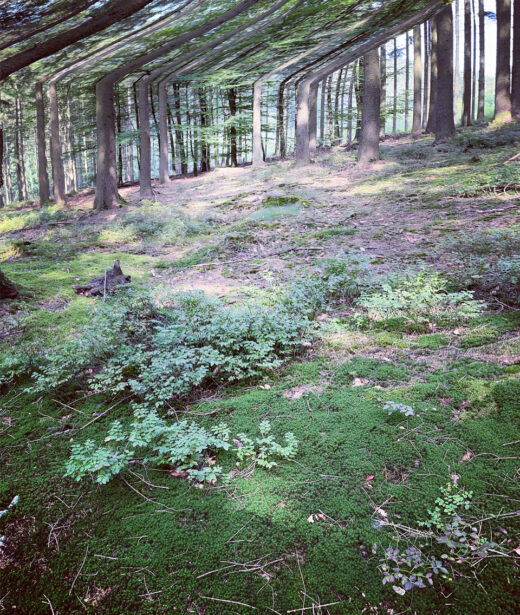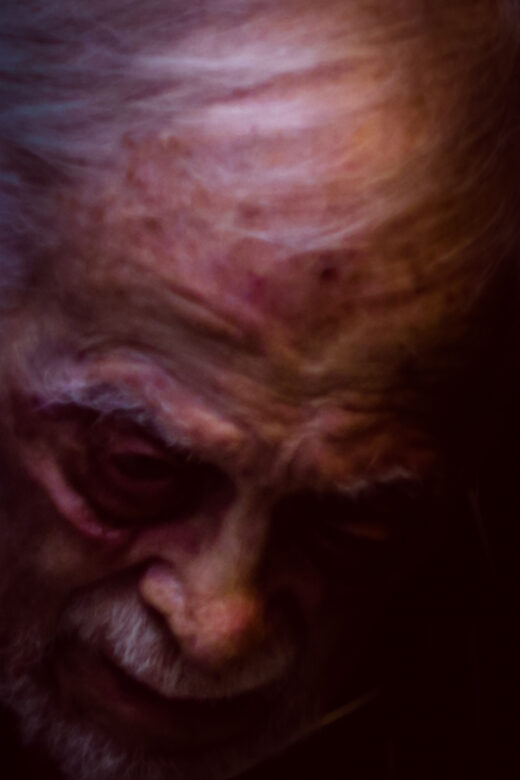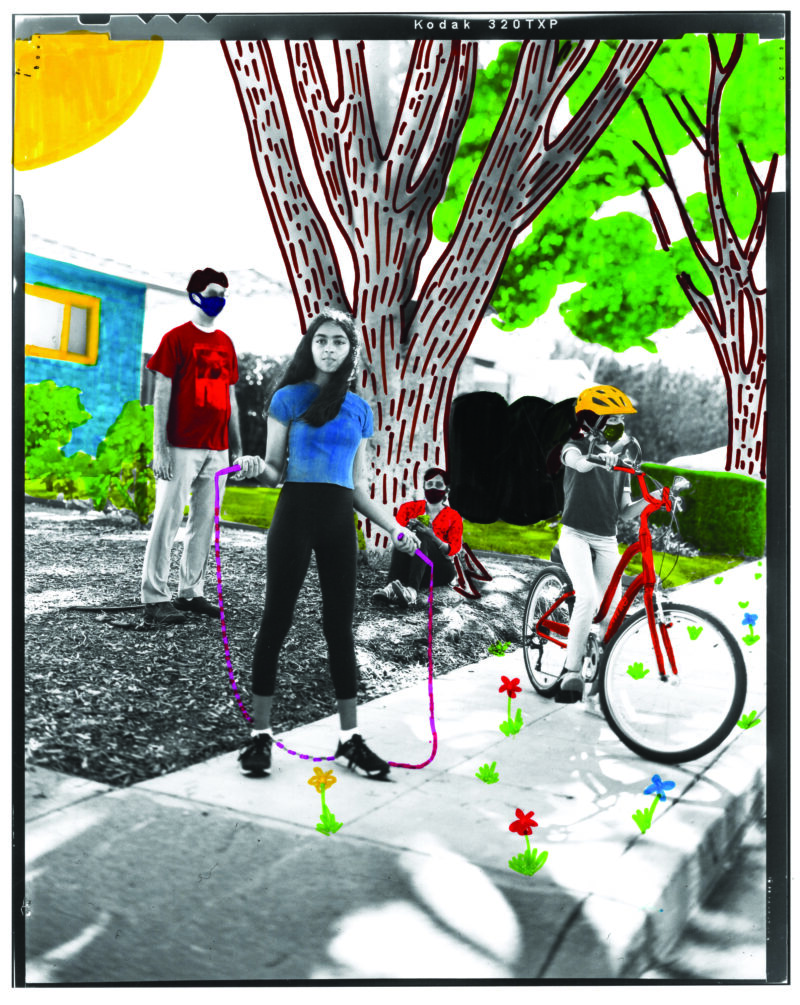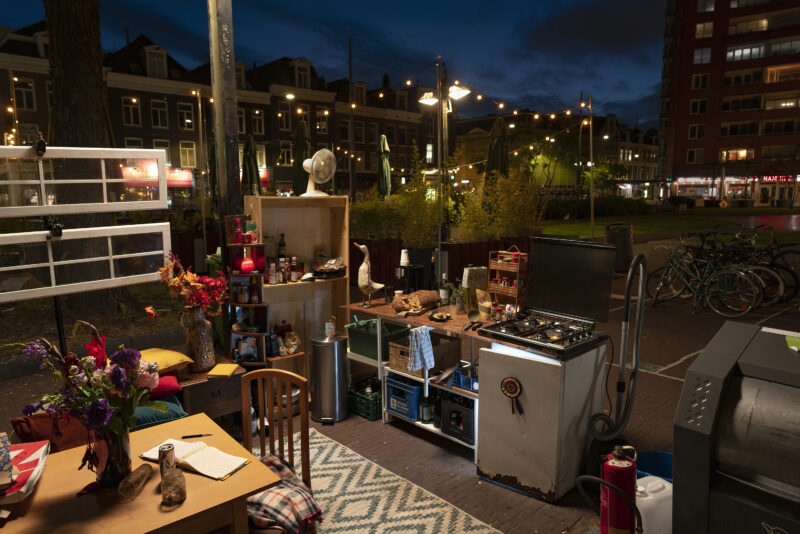
It’s All About Perspective
My photography does not depict actual reality as such; rather, it portrays a ‘reality’ as experienced and constructed by me. By piecing together various seemingly random elements – or, in turn, by consciously casting them aside – I am able to create a new, often abstract realism full of color and tactility in my images. These are then all painstakingly created by hand and without the use of digital technology. An image comes together much like a sculpture does: I am constantly chiseling away at various bits and pieces, continuously constructing and composing.
The works are full of contradiction, most notably in the way I make use of often surprising and somewhat unorthodox combinations of color and light. This helps me to create illusory and dream-like atmospheres and moods. I often play with the traditional rules of what perspective should be. I strive to add another dimension to my work, both literal and emotional: the viewer finds that the two-dimensional photo in front of them has unexpectedly transformed into a three-dimensional tactile world in which to reach and feel, subtly and ethereally enveloping themselves with a new sensation, with a sense of wonder and marvel.
Find out more:
Website: www.femkereijermanart.nl
Instagram: @___femke___reijerman

Glimpse One More Time
The project delves into the intricate relationship between humans and urban spaces through an installation made of two sculptural components, 3D Animation and prints. This project probes various facets of the city as a part of a complex entity: a place teeming with opportunities and hope, yet equally suffused with a sense of privacy and feelings of alienation. Urban spaces are not only sites that host interaction and memories interwoven among towering structures but also reveal, in every nook and cranny, the distances and disconnections between individuals. As the echoes of the Industrial Revolution persist, ‘Glimpse One More Time’ acknowledges a prominent characteristic of the 21st century: the coexistence of old and new architectures within our urban landscapes. The swift pace of urban development, juxtaposed with moments of tranquility, highlights the defining contrasts of modern cities, where transformation amplifies urban density and creates spaces at once bustling that are both active yet laden with moments of solitude and disconnect.
Find out more:
Instagram: @jamielambert24k

Nizhónígo ¥ííkado “Walk in Beauty”
When I arrived in the Navajo Nation for the first time in 1987 I was struck by the indescribable beauty of the landscapes, the natural wonders overwhelmed me. Between the four Sacred Mountains, as the Navajo call them, it is a universe of its own. In this enchanted land, Navajo or Diné, as they call themselves, have lived for the past seven centuries.
Their world is basically a continuous and highly interactive dynamic complex of processes of growth, change, repetition, and evolution. In a sense reality is not primarily populated by ‘things’ as in the Western view, but is basically a “process”. The rituals too are intrinsically a particular kind of process of interaction with impact with (a part of) nature.
Behind all this beauty, there is a dark side caused by White western people. The Reserve is very rich in uranium and coal, so the US government opened many mines, with all its consequences.
After years of protest and activism with the Diné people, this exhibition is a dedication to them. I would like to share with you the beauty of the Rez as well as the strength of the people.

The Lost World / My AI Dreams
“The Lost World” will take you on a journey through the magically desolate places of Japan. Almost 8,5 million houses stand abandoned and even in the municipality of Tokyo, one in ten houses is empty. This was unimaginable for the Dutch photographer Maan Limburg. She was so fascinated she spent months in these locations.
Limburg captured these deserted places in intimate photographs. Her keen eye allows her to go way beyond the urban exploring genre and shows you the rich stories and human details of these locations. CNN Travel: “The Lost World is more than just a photo book – it’s an homage to the country she loves and respects.”
“My AI Dreams” is a visual exploration of artists & AI. After creating a fashion series with AI and getting raving reviews, Limburg got curious about what she and her team would add when creating this series in real life. Above all, she was curious what her public would value: human involvement, creativity, or just pretty images. With AI creating beautiful things so easily, what do artists still add?
Find out more:
Website: www.maanlimburg.com
Instagram: @maanlimburg

Asian Dusk – The Empire of Light
In my long-term project “Asian Dusk – the Empire of Light” I document cityscapes and impressions of Asian metropolises. The fast economic, political, and demographic growth in Asia is rapidly changing these urban landscapes. Condensation transforms them into dystopias. the excessive use of artificial light, the light pollution, even sometimes makes the night look like day. Especially this impressive interaction of natural light and artificial light in twilight and night shots fascinates me very much.
I try to get a certain order from the urban landscapes, which never come to rest, through the composition of light, color, surface, and lines. The human element is often implied in my pictures, but the human being is not visible.
This also underlines the anonymity that prevails in large cities. visiting an Asian city is an overwhelming experience that engages all of the senses. In a search for a suitable location, I let myself be driven by the smells and noises of the urban jungle, with the intention of transforming the hectic and chaos into an aesthetic calm and balance.
Find out more:
Website: www.maximilian-gottwald.de
Instagram: @gottwaldmaximilian
THE GAP
The GAP is about letting go of our deeply ingrained habits and assumptions. It is about urgent questions that we must continue to ask ourselves: who or what do we exclude? What don’t we see? How do our devices and our data reinforce that blind spot?
Is it possible to bridge the gap somewhat? Can we – now that we are aware of our narrow view – make room for wonder, for new “spaces of experience”?
I argue that we dare to look at the constant fluidity of our existence and the eternal new ‘possibilities of being’ that this awareness offers.
Find out more:
Website: mediakaal.nl
Instagram: @deruijterpatricia
RAUHNACHT
When I was 21 I almost developed depression, it was after the death of my lover. I lay in bed for half a year, could hardly get up, and had nightmares every night. I was able to overcome it, but now, decades later, these episodes return to me from time to time.
Winter is hard. I live in a small town in the North, the cold creeps through the cracks of the old house, which I rarely leave. What comes crawling out of the holes at night and sneaking around my home? Wild animals? Hairy demons? Evil spirits? I make up stories and find joy in them, my dreams are wild and colorful. But sometimes when I wake up and can hardly breathe or swallow, I have a big lump in my throat.
RAUHNACHT is a dystopian tale about my annual winter blues and my life in a hostile and maybe dangerous environment. Working on it made me feel euphoric and brought back the energy and fun to dark nights.
Find out more:
Website: genilke.com
Instagram: @pik.dame

Photopaintings
Objects with abstract qualities, particularly details of ships, were photographed in the ports of Rotterdam. The deconditioning of the usual logical-rational interpretation of the ship as a logistical and technical object opens the view to an emotional narrative about sailing, grazing, and colliding, reflected in the ship’s hull.
From this perspective, the ports become a gallery where ships, adorned with paintings of shapes, colors, dents, rust, welds, and rivets, exhibit their stories. These “paintings” are the source and inspiration for this exhibition. The sometimes extensive digital manipulation of the original photos into painterly abstractions aims to enhance the emotional aspect of these stories and their imagination, mindful of Albert Einstein, who is said to have once stated: “Logic will get you from A to B. Imagination will take you everywhere.” Each photo is released only once, making it as unique as a traditional painting. No release of copies or series. Hence: photopaintings.
Find out more:
Website: www.jwgfotopaintings.com
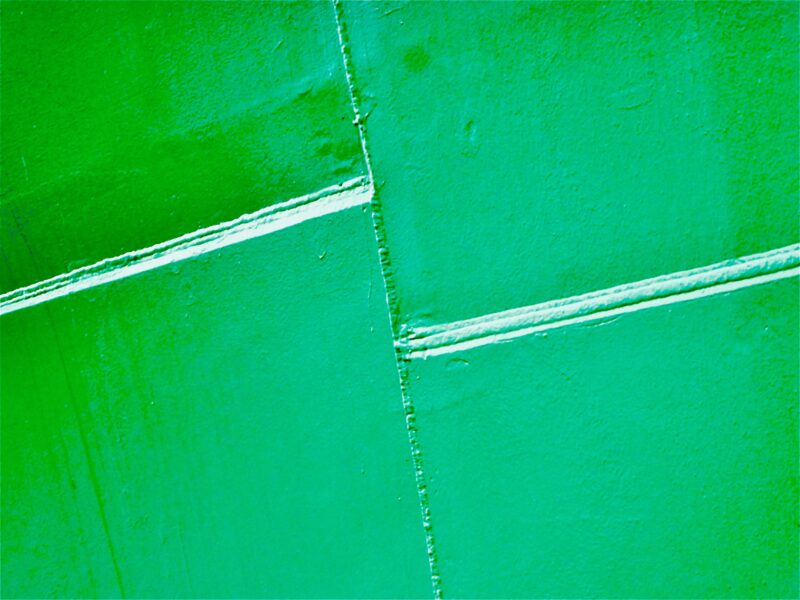
Adam

Front Yard
The front yard is as much a metaphor as it is a space. Homes reflect the material successes of their inhabitants, their aesthetic tastes, and concrete the ties that bind family, lovers, and friends. When the time came to a proverbial standstill, I turned to my community to make portraits of people in their front yards and the conversation has since continued.
The slow pace of using both digital and analog large-format cameras, simultaneously, gave me time to reflect on my role as a photographer. I decided to disrupt the usual one-sided gaze so problematic in documentary photography by opening up the process to collaboration. Making large format black and white prints, I invited these families to color or embellish them however they liked.
This set of images inverts the process, where people choose how they want it to be seen. It is a more in-depth conversation of the perceived realities and how easy it is to break barriers of judgment by opening our worlds to each other. While humanity is struggling with wars, isolation, and distrust, perhaps the antidote is in the collaborative sowing of seeds that represent, affirm, and bind us all.
Find out more:
Website: www.ashimayadava.com/
Instagram: @indigonyx
INT/EXT
In his most recent project, “INT/EXT” (Interior/Exterior), Suyderhoud explores the realm of discarded belongings that people no longer want. He embarks on nightly journeys through the streets of Amsterdam, capitalizing on the nights when Amsterdam’s residents place their bulk waste next to the city’s underground bins for collection the following morning. In each neighborhood he visits, Boris collects this discarded refuse and transforms it into captivating public installations. Through this process, he bestows a sense of homeliness to his scenes and rekindles the value of these objects before they are lost to the ever-expanding landfill.
Find out more:
Website: www.borissuyderhoud.com
Instagram: @suyderhoud_
